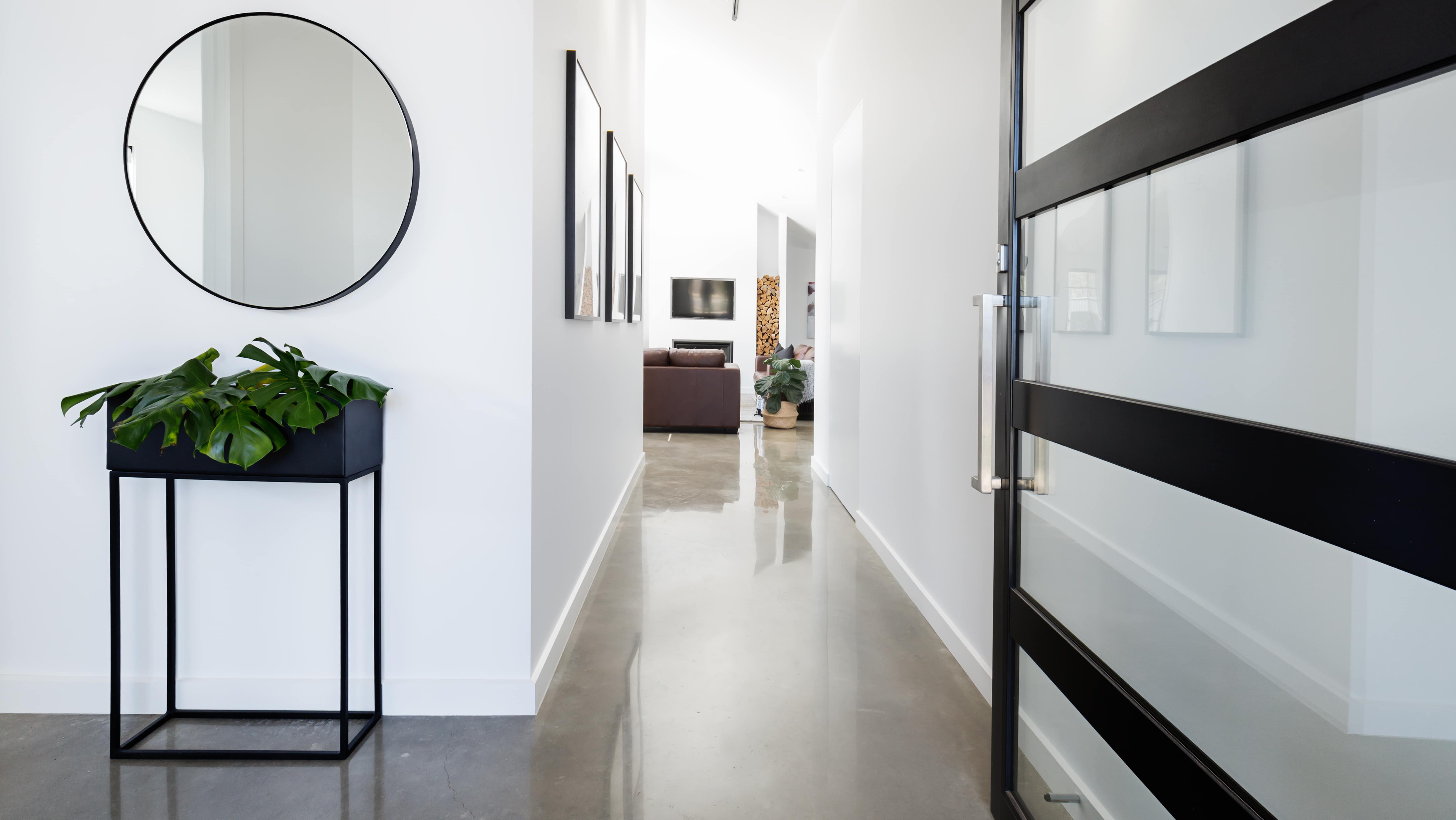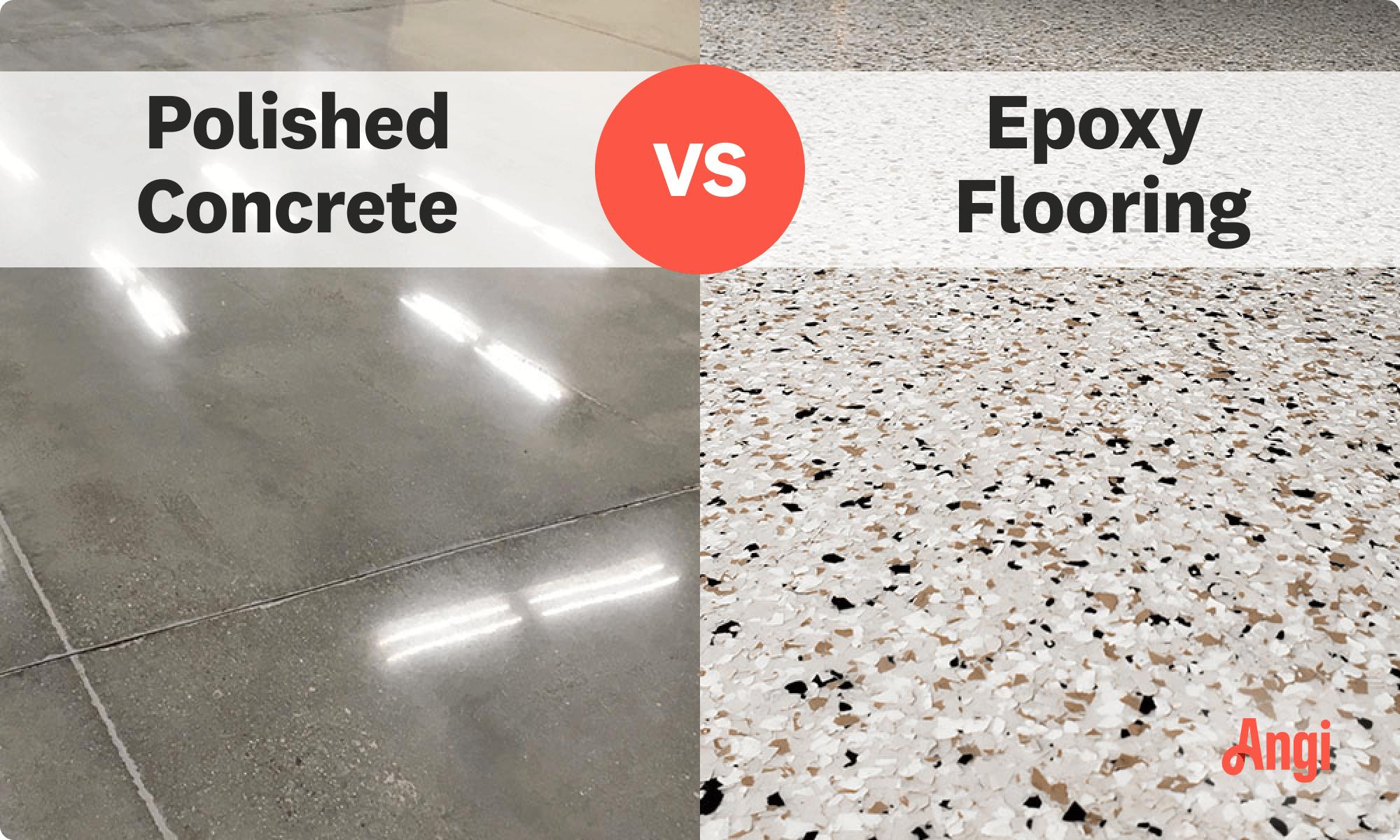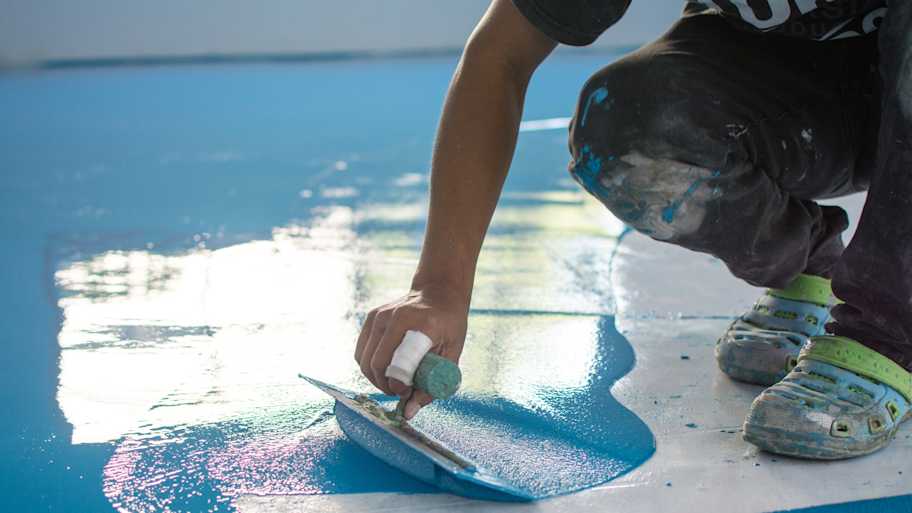
Installing new baseboards can totally refresh the look of your walls. Learn about the cost to install baseboards in your home.
Get ready for a shiny flooring face-off in polished concrete vs epoxy


Polished concrete floors are eco-friendly, UV-resistant, and energy-efficient.
Polished concrete typically costs $4,500 to install, while epoxy costs $2,500.
Epoxy floors are water resistant, customizable, and can hide imperfections.
Polished concrete is more suitable for new construction.
Epoxy works on new or renovated floors.
Polished concrete floors and epoxy floors are both durable flooring options for garages, basements, and kitchens. The differences between the two can help you decide which would be best for your project. Is it polished concrete for its UV resistance and eco-friendliness or epoxy for its impact and abrasion resistance? Either flooring is durable and customizable to fit the purpose and aesthetics you want.
Polished concrete floors are ground, polished, and sealed to leave behind a shiny, smooth concrete surface. These floors are durable, UV resistant, customizable, and attractive. However, they’re also susceptible to water damage if not installed correctly and can be slippery when wet. Epoxy flooring, also known as epoxy concrete flooring, involves applying a highly durable epoxy resin to a concrete floor. These floors are durable, customizable, impact-resistant, and can be slip-resistant. However, they can flake or chip if not installed correctly and may discolor with repeated UV exposure.

Polished concrete has been ground with diamond grinding bits of varying grits until the floor reaches the desired sheen. Hardeners and sealants are then applied to strengthen the concrete. Sheen levels vary with finer, shinier floors costing more to install. The polished concrete costs vary widely by the square footage and concrete finish type, ranging from $400 to $32,000, with an average cost of $4,500.
| Pros | Cons |
|---|---|
| UV stable | Susceptible to water damage |
| Environmentally friendly (does not contain petroleum products) | Slippery when wet |
| Highly reflective | Better for new construction |
| Customizable sheen and finishes | |
| Low maintenance |
Best for:
New construction
Floors exposed to direct sunlight
Those who are eco-conscious
Polished concrete is highly durable, and if properly maintained, can last over 50 years. It’s UV stable, meaning it won’t discolor if exposed to direct UV rays. The polished surface is also highly reflective, which can reduce energy use by reducing the need for artificial lighting.
Polished concrete can be ground to varying sheen levels, with different scoring techniques, faux finishes, and color customizations applied or mixed in. It’s also relatively low maintenance, requiring only a deep cleaning every year and the repair of cracks or chips as soon as they are discovered.
Concrete isn’t the easiest material to handle, and if the entire installation and polishing process isn’t done correctly, it can be susceptible to water damage. Mold and mildew growth can result if water seeps into the pores of the concrete.
Polished concrete floors can also be slippery when wet, posing a potential hazard for children, pets, and unstable individuals. Polished concrete can have a texture applied, but it can still be slippery. Finally, polished floors aren’t always an option for renovations. Older concrete floors may have been exposed to oils and chemicals or have structural damage that prevents the polishing or sealing process from working effectively.


Epoxy floors have epoxy resin layers applied over a concrete floor. There are various types of resins, techniques, and additives that can alter the floor’s appearance and durability. Epoxy floors cost between $2,000 and $4,500 to install, with an average price of $2,500.
| Pros | Cons |
|---|---|
| Slip resistant | Can discolor in direct UV exposure |
| Many customization options | Difficult to DIY |
| Can hide imperfections | |
| Chemically resistant |
Best for:
Home renovations
Floors that may be exposed to motor oil and other car fluids
High traffic areas
There are many types of epoxy resin and customization options that can be used with those resins, like colors, stencils, patterns, and textures. You can also add textured top coats that make the floor slip-resistant, which is a good option for high-traffic areas.
One of the most significant advantages of epoxy is that it can withstand liquids and motor oil, although it’s not indestructible, as gasoline can cause it to peel. It can also withstand the impact of heavy items, although the degree of resistance depends on the type of epoxy. Expoy resins can also hide imperfections in the floor, so they’re suitable for both new construction and home renovations.
Epoxy is UV sensitive, so it can discolor if regularly exposed to direct sunlight. It’s also tricky to install. If it isn’t installed correctly, the resin can chip, peel, or flake. Some epoxy resins last 20 years, but others, like water-based resins, are more susceptible to damage and may need replacement in 3 to 5 years.
Both polished concrete and epoxy floors can deliver shiny, durable flooring. But one might be a better fit for your budget and project based on a few factors.
Both of these flooring types can be highly customized, but epoxy flooring edges out concrete for the range of available colors, textures, top coats, additives, and patterns. Polished concrete can be scored, etched, and colored, but the range of options isn’t as wide as that of epoxy.
Solid epoxy resin and solvent-based resins resist motor oils, water, and impact damage better than polished concrete. However, keep in mind that water-based resins may not offer the same benefits, so if you want the durability of epoxy, stick with the more expensive resins.
Epoxy floors are easier on your wallet with an average price of $2,500. Polished concrete costs more because it’s labor-intensive and requires more specialized equipment.
Neither of these methods is DIY friendly. You’re better off having a local concrete floor pro with experience in the method you choose, or risk damaging the floor or having less than stellar results.
Small dings and chips are repairable in either floor type. However, both types of flooring can be damaged to the point where you need to repolish the concrete or reapply a new layer of epoxy.
Maintenance for polished concrete is basically a deep cleaning once a year and resealing every two or three years. You can sweep, vacuum, or wipe down the floor as needed, but wipe up spills right away. Epoxy maintenance, on the other hand, requires pH-balanced cleaners because acidic cleaners or liquids, even vinegar or lemon juice, can cause the epoxy to peel. You should clean it with diluted ammonia at least twice a month to maintain the cleanliness and sheen.
Polished concrete that’s well-maintained can last up to 50 years. Well-maintained epoxy flooring can last up to 20 years.
Both polished concrete and epoxy flooring increase the reflectiveness of the floor, which can reduce the energy used for lighting. However, polished concrete wins this category because it does not contain or require petroleum-based products, unlike epoxy.
Polished concrete generally increases the resale value of a home or business because of its durability and easy maintenance. Epoxy flooring looks nice, but it doesn’t necessarily equate to a higher value due to the shorter life and maintenance.
From average costs to expert advice, get all the answers you need to get your job done.

Installing new baseboards can totally refresh the look of your walls. Learn about the cost to install baseboards in your home.

The cost to rip up carpets and install laminate depends on factors like labor prices, materials, and location. Use this guide to get a detailed cost overview.

Staining concrete floors can add a little something to a drab slab. Learn more about how much stained concrete floors cost and what factors impact it.

Discover the cost to install indoor-outdoor carpet. Learn about average prices, key cost factors, and tips to save on your next flooring project.

Updated flooring can make any room in your home feel brand new. Explore flooring installation costs in Columbus, OH, from materials to labor costs.

How much does a Saltillo tile floor cost? It depends on the size of your space, but on average, you’ll pay between $6 and $28 per square foot for this tile.